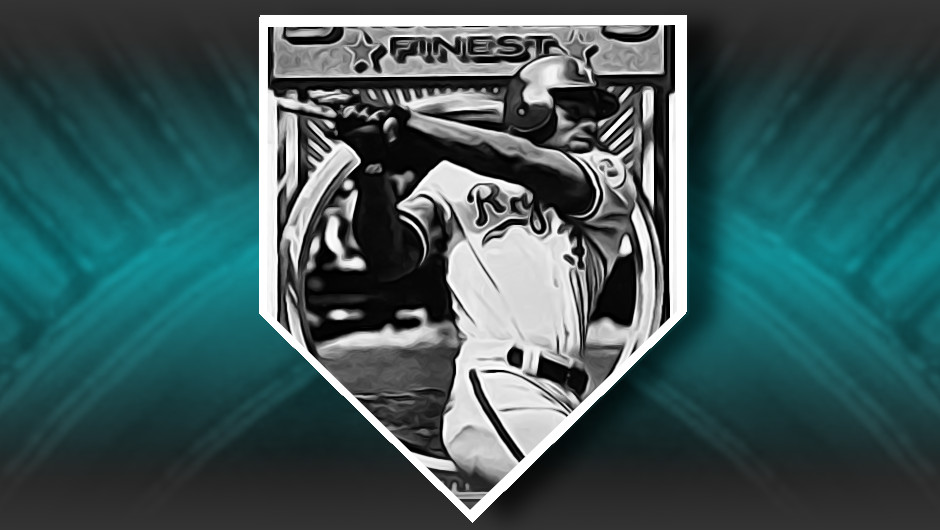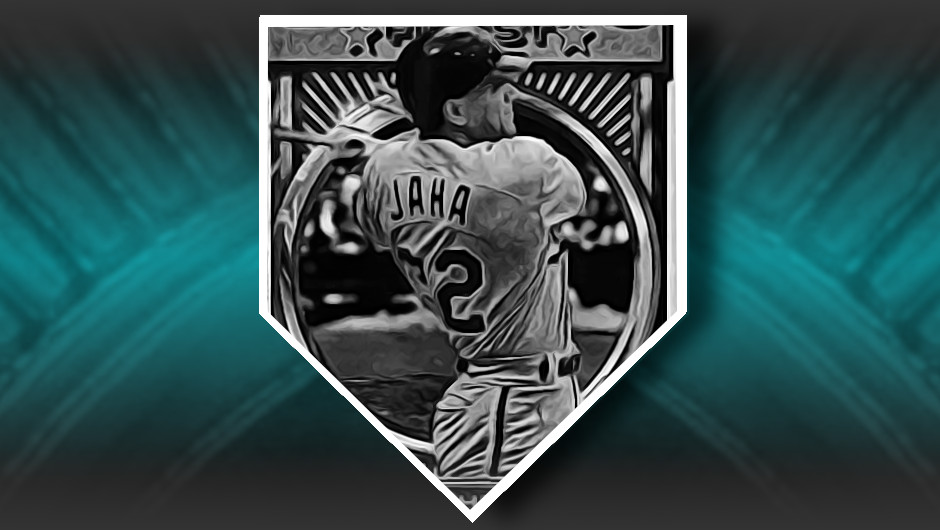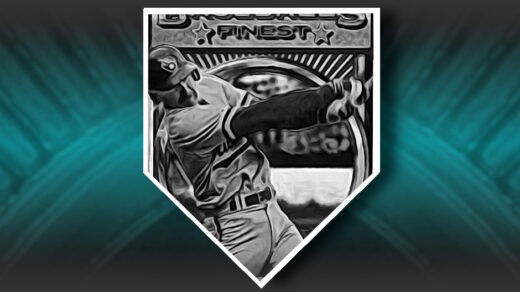Here’s a stat that summarizes the career of John Jaha: He led the 1995 Milwaukee Brewers in homeruns despite appearing in only 88 games that season. Injuries were a regular feature of Jaha’s decade in the majors. Of the 1,620 games scheduled during his 1992-2001 career, he appeared in just 826 of them (51%).
Jaha had been drafted back in 1984 and actually played more minor league games than in the MLB. By the time he took his first Major League swing fellow draftmate Mark McGwire was approaching 200 career homeruns. Though frequently on the disabled list, Jaha knew his window for making an impact was limited and he fought to keep his spot in the lineup. He frequently blew out body parts while hustling on behalf of the Brewers and Athletics, once hurting a hamstring rounding second and deciding to continue to third by crawling. His later seasons with Oakland were characterized by a recurring limp.
However, in the rare instances when Jaha was healthy he could hit the ball hard. Despite injuries and a late decade free agency move to Oakland, he finished just behind Greg Vaughn with the decade’s second highest homerun total for the Brewers. He somehow managed to combine this propensity for going deep with a high strikeout rate in 1999. That season he swung and missed a pitch during the All-Star Weekend Homerun Derby.
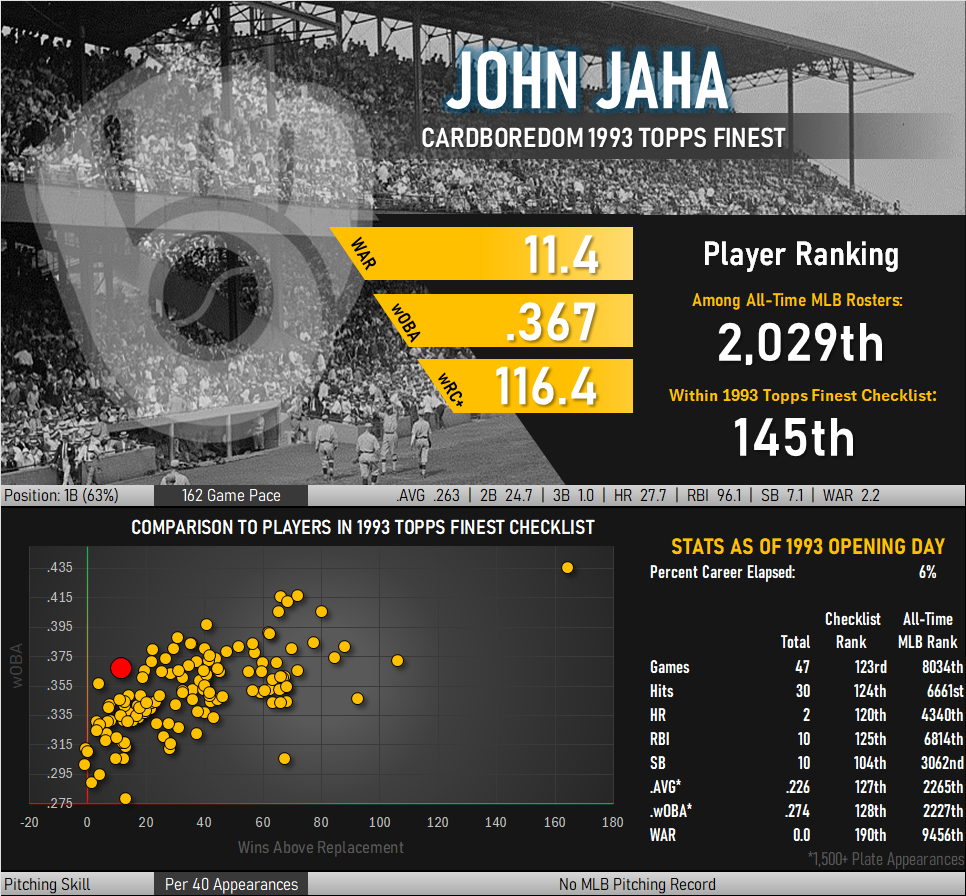
A Closer Look: Jaha’s Topps Rookie Parallel
Jaha’s 1993 Finest Refractor was not his first parallel card. His Topps rookie was given multiple versions the prior year in what is generally considered the first ever parallel insert set. He is pictured in the upper right of one of Topps’ numerous multi-player prospect cards. Topps sent collectors looking through packs to obtain special versions featuring player names embossed in gold leaf.
Scratch-off game pieces resembling lottery tickets were included in each pack, affording collectors the chance to win additional gold cards. Topps had estimated how many would be redeemed and prepared an undisclosed but large number of cards to be sent out. Enterprising collectors soon realized every game piece was potentially a winner if the owner scratched off only certain areas of the ticket. The winning areas could be revealed ahead of time by holding the game piece to a strong light, allowing the underlying writing to be visible through the scratch-off coating. The result was a deluge of winning tickets far in excess of what Topps had expected. Printing presses were kicked back into gear and more were made. To differentiate the first and second printing, Topps adding and the word “Winner” in gold foil next to player names.

Jaha and Card Collectors
Jaha’s cards never really caught on with the general card collecting public. His arrival with the big league club in 1992 was marked with rookie cards from Topps, Bowman, Donruss, and Fleer. Donruss assigned Jaha the Brewers’ spot in its Rated Rookie subset. Fleer missed the boat and only managed to get Jaha into its Update set, though the issue would go on to become highly prized when collectors realized just over 10,000 sets had been produced. His Topps rookie is shared with the once-popular Atlanta Braves prospect Ryan Klesko.
Cards of the Milwaukee slugger debuted in 1992 Beckett price guides around $0.35 or so and had virtually disappeared from most listings by the time Jaha finally put together a decidedly good season a few years later. By this point the hobby collectively shrugged, leaving most of his cards with less demand than when he first debuted.
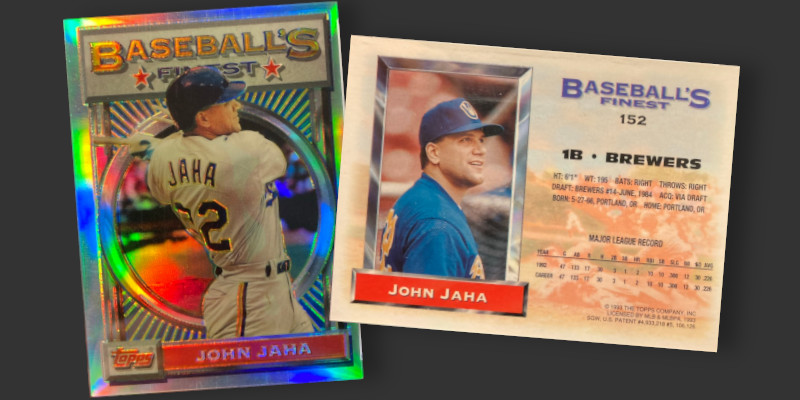
Jaha’s ’93 Finest Refractor was issued just one year after his MLB debut. Topps was a bit optimistic with his inclusion in the checklist, as he was coming off a .226 rookie season and was putting up similar numbers through late May 1993. Still, Topps had to find a fourth Brewer to fill the set and Jaha still had potential. Today this card is one of the more difficult to locate in a third-party grading slab, making it a bit tricky to track down for graded set collectors. Low population numbers (less than 100) are not the result of condition sensitivity, but rather the result of years of low incentives for hobbyists to break these out of collections and send for review.


